Family: Rosaceae
Common name: Himalayan blackberry
E-flora BC: https://linnet.geog.ubc.ca/Atlas/Atlas.aspx?sciname=Rubus%20armeniacus
Wikipedia: https://en.wikipedia.org/wiki/Rubus_bifrons https://en.wikipedia.org/wiki/Rubus_armeniacus
The accepted scientific name for Himalayan blackberry is Rubus bifrons. However, you will often find it referred to as R. armeniacus, or R. discolor. We will stick with the name R. bifrons on this site.
Himalayan blackberry is a problematic invasive species in our area. It grows fast, extending strong thorny branches that climb on and smother other vegetation. People enjoy the berries in late summer, which has probably contributed to its establishment, and unwillingness to control its spread. Birds and other animals eat the fruit and distribute the seeds widely.
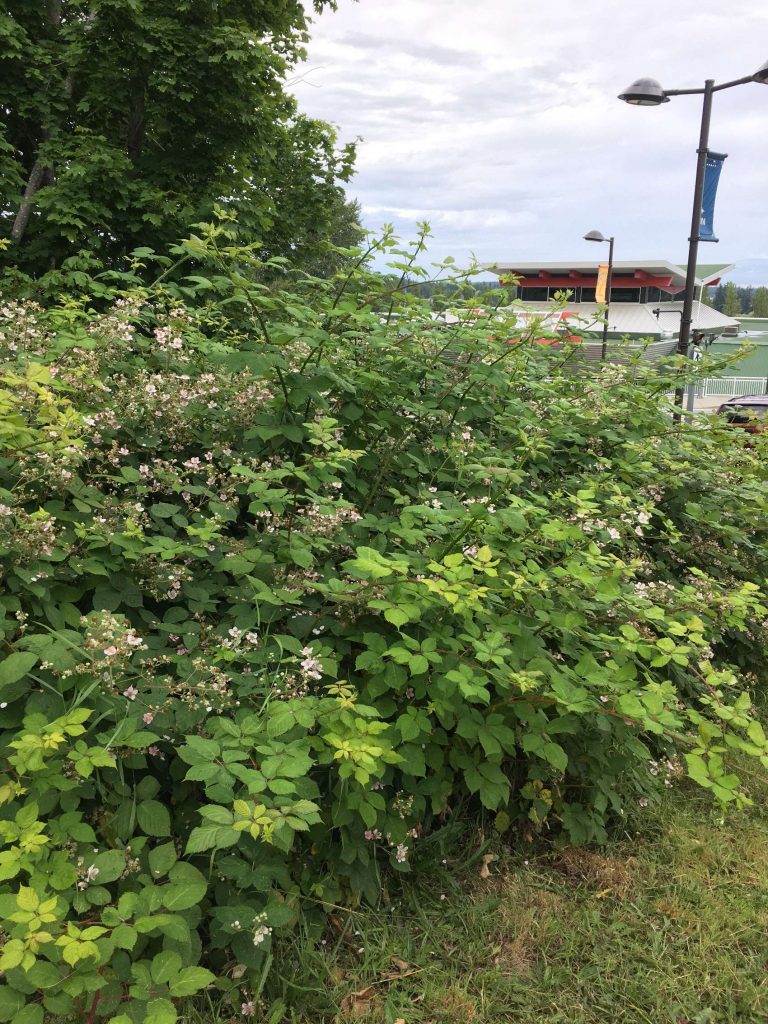
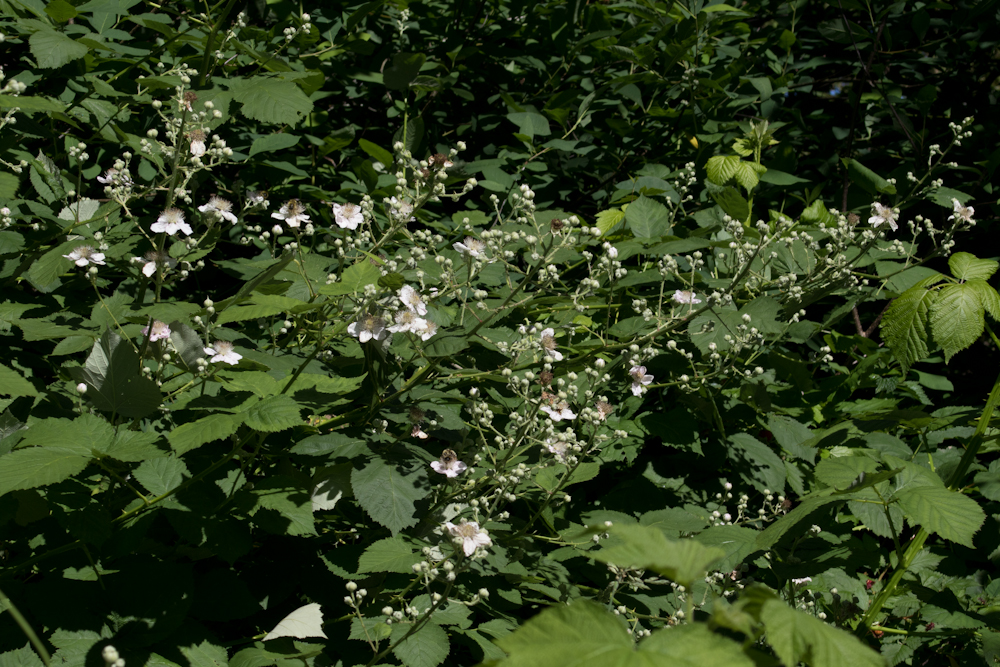
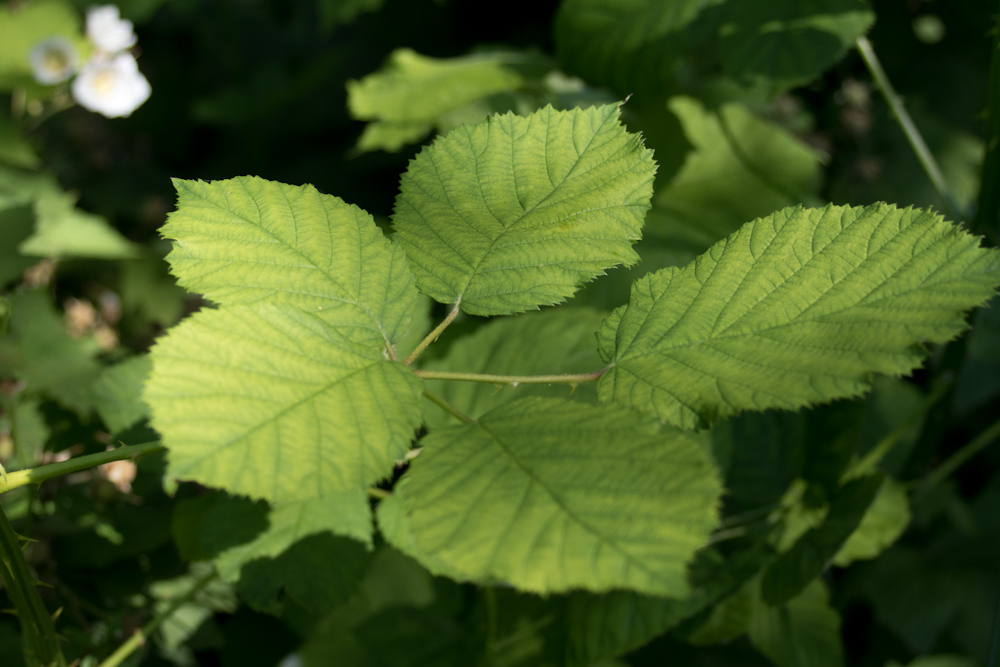
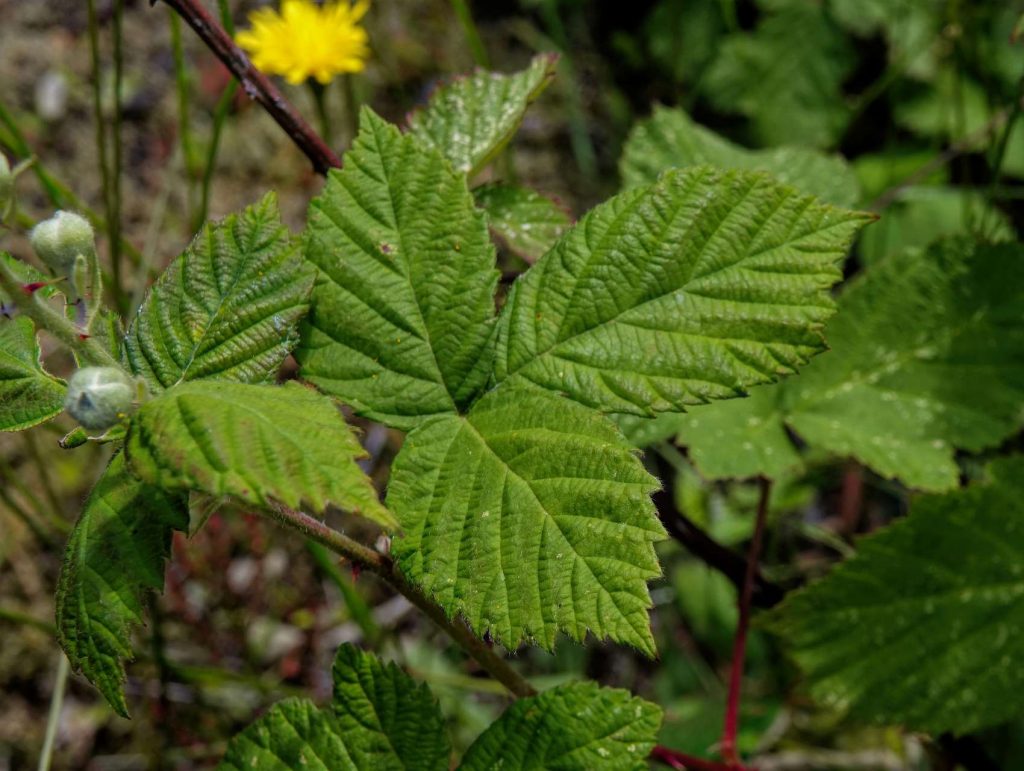
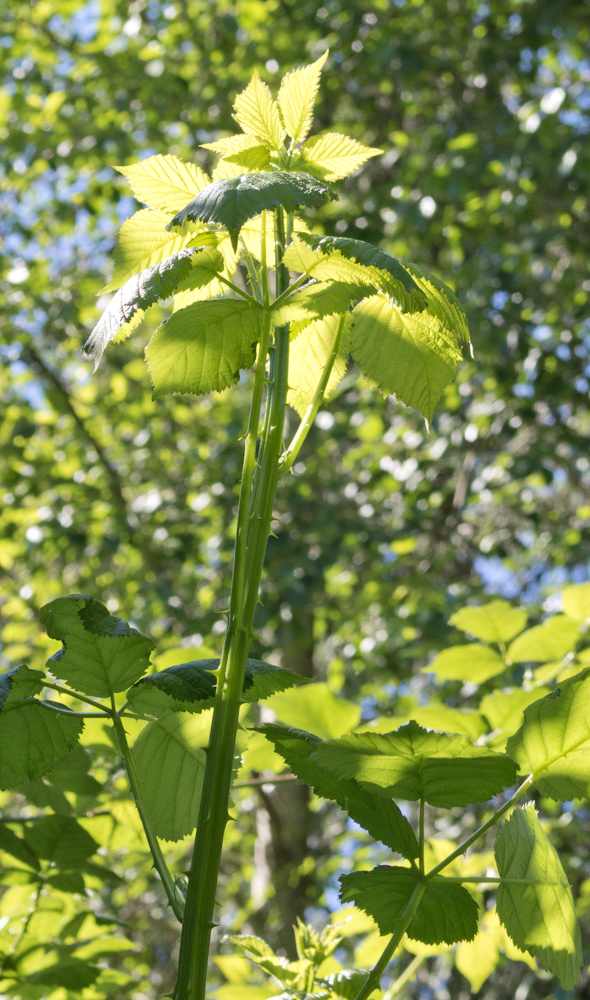
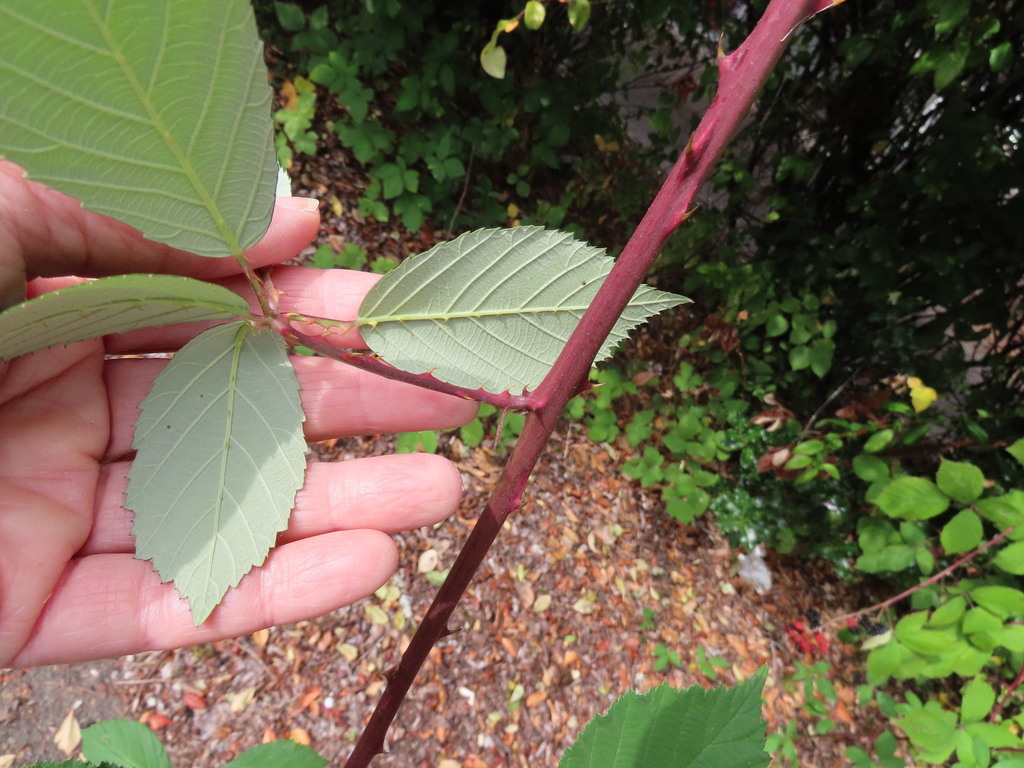
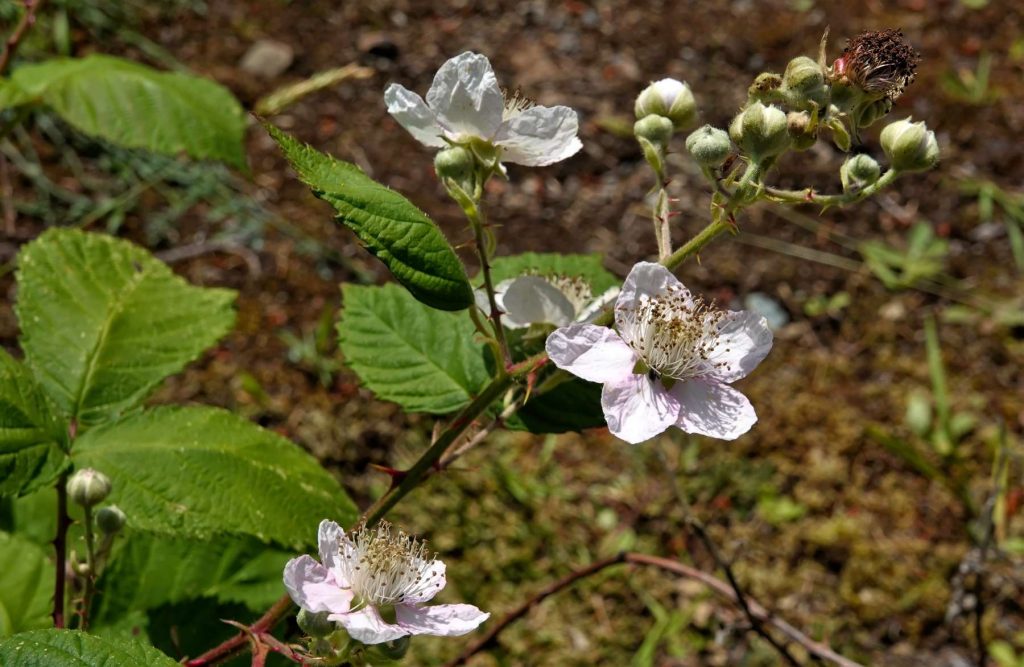
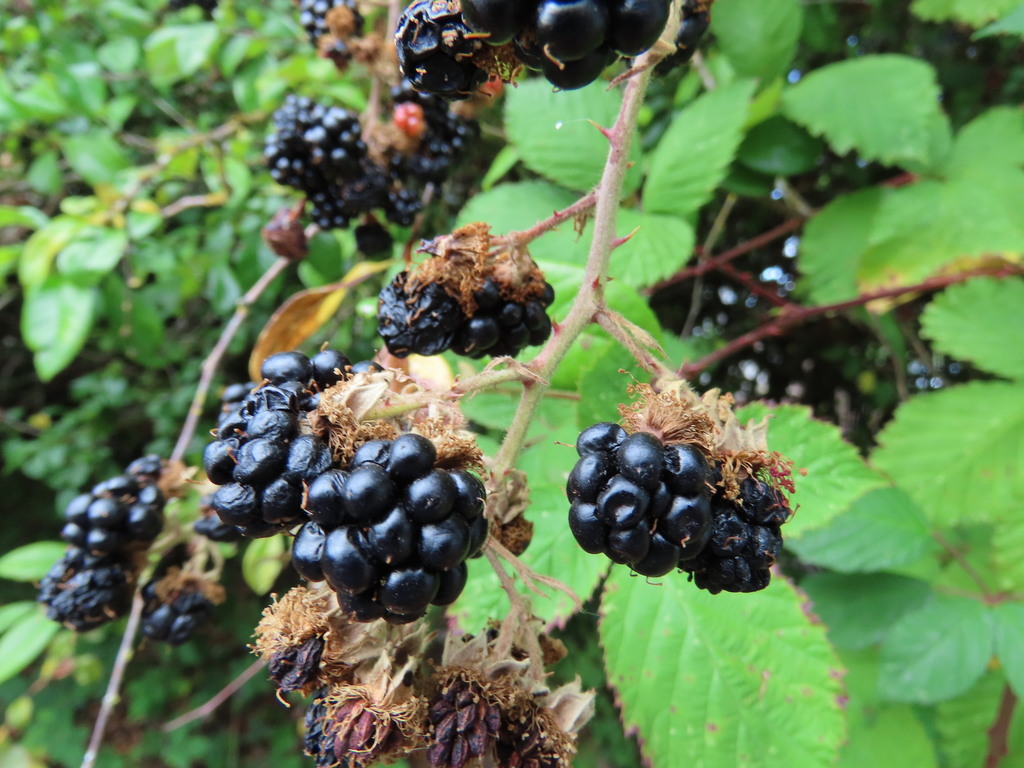
Compare and contrast Himalayan blackberry (R. bifrons) to the three native Rubus species listed on this site: thimbleberry (R. parviflorus), salmonberry (R. spectabilis) and trailing blackberry (R. ursinus). Focus on leaf-shape and number of leaflets per leaf, growth habit (trailing or upright), presence or absence of prickles on stem.